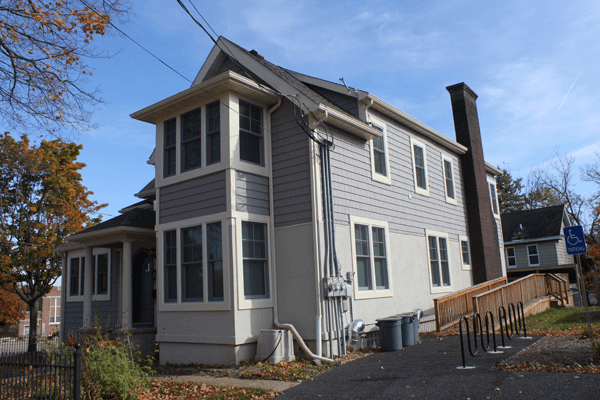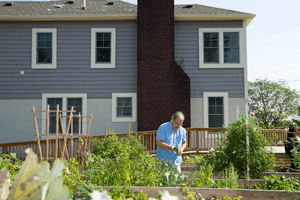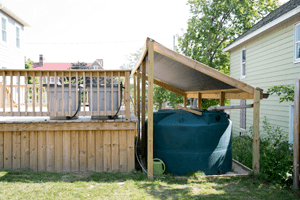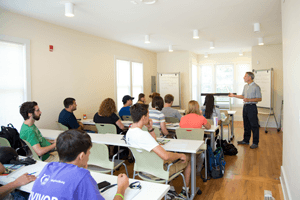UM-Flint Urban Alternatives House Awarded for Leadership in Energy and Environmental Design (LEED)

Four-years ago this month, the house that was to be turned into an urban living laboratory was instead turned into a pile of ashes. Investigators ruled arson as the cause of the blaze that destroyed the University of Michigan-Flint would-be Urban Alternatives House (UAH).
Two years ago, another house was selected in Flint's Central Park Neighborhood at 924 Eddy Street, and the university collaborated with the Genesee County Land Bank to establish a new, award-winning UAH.
On Thursday, October 30 at 5:00 p.m., UM-Flint's Earth and Resource Science Department will open the UAH for public inspection and visitors can join in the celebration of the award of LEED certification.
The U.S. Green Building Council (USGBC) developed the Leadership in Energy and Environmental Design program, commonly known as LEED, as a rating system to measure the quality and sustainability of buildings. The Urban Alternatives House was developed using LEED for guidelines.
The LEED process operates as a checklist in that it sets targets and tracks progress during the design and construction of a green home. It is a comprehensive ranking system that evaluates energy use, water, indoor air quality, materials used, landscaping, and education of building users.

Reaching the LEED standards requires inspection and testing by an independent "Green Rater" and the checklist is then reviewed by the USGBC representative in Michigan. Higher-scoring homes within the LEED rating system earn higher certification levels. The UAH achieved a platinum certification, the top ranking.
"LEED certification was a rigorous and demanding process for everyone involved, but we now have a building that meets the highest standards for sustainability," said associate professor Richard Hill-Rowley, who has been heading the UAH project.
Some of the specific features incorporated in the design include:
• Geothermal heating and cooling system
• Enhanced insulation to create a tighter house envelope
• On-demand hot water heating
• Building monitoring system to gather data on the operation of house systems
• Solar energy system

The building has both classroom space and residential quarters. The classroom space has been used for a semester-long Technology and Society class. The English Language Program used the space for a 12-week spring class and is meeting once a week this fall. Several ERS classes have used the space for single or multiple visits.
"We have recently finished the second growing season for the community garden at the UAH. We had five raised beds in the first year and nine this year. Cultivators were house residents, neighbors, students, and faculty," Hill-Rowley said.
In the future, faculty will be educated about the advantages of using the UAH in their classes. It is a venue that can work well for First Year Experience classes and it is expected that the space will be used for this purpose soon. Faculty who are looking for off-campus locations that can help in meeting community involvement requirements of their class are being urged to use the UAH.

"The Urban Alternatives House is a unique partnership between the University of Michigan-Flint and the Genesee County Land Bank. The whole project is a laboratory for sustainable living which will enhance the Energy and Sustainable Systems program in the Department of Earth and Resource Science," Hill- Rowley said.
Funding partners for the project include: Kresge Foundation, Rotary Club of Greater Flint, the C.S. Mott Foundation, Consumers Energy, and the Community Foundation of Greater Flint. Funding was provided to the Land Bank by the federal Neighborhood Stabilization Program.
Additional information on the Urban Alternatives House can be found at the Michigan Journal for Sustainability website.
Related Posts
No related photos.
- College Town
- Community
- Earth and Resource Science
- Green Initiatives
- Research
- Technology
- University News
UM-Flint News
The Office of Marketing & Communications can be reached at [email protected].